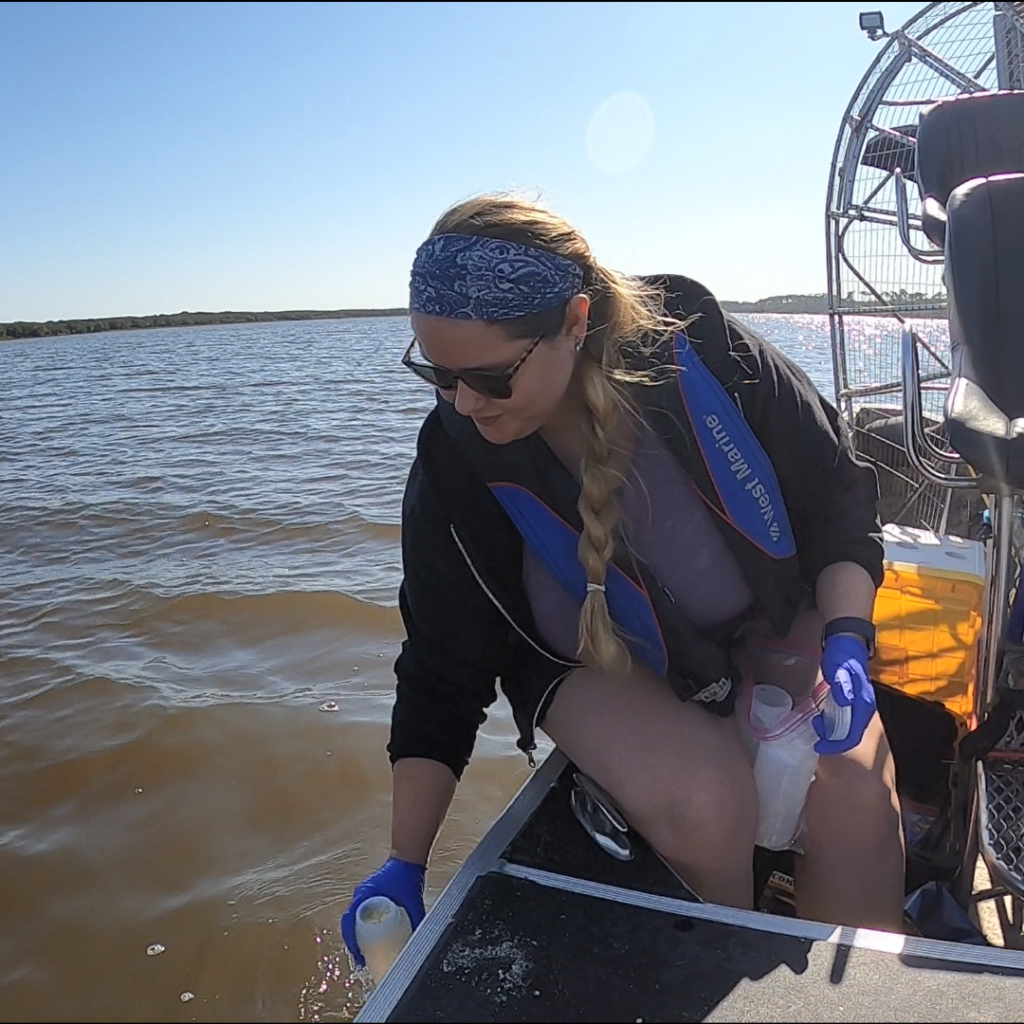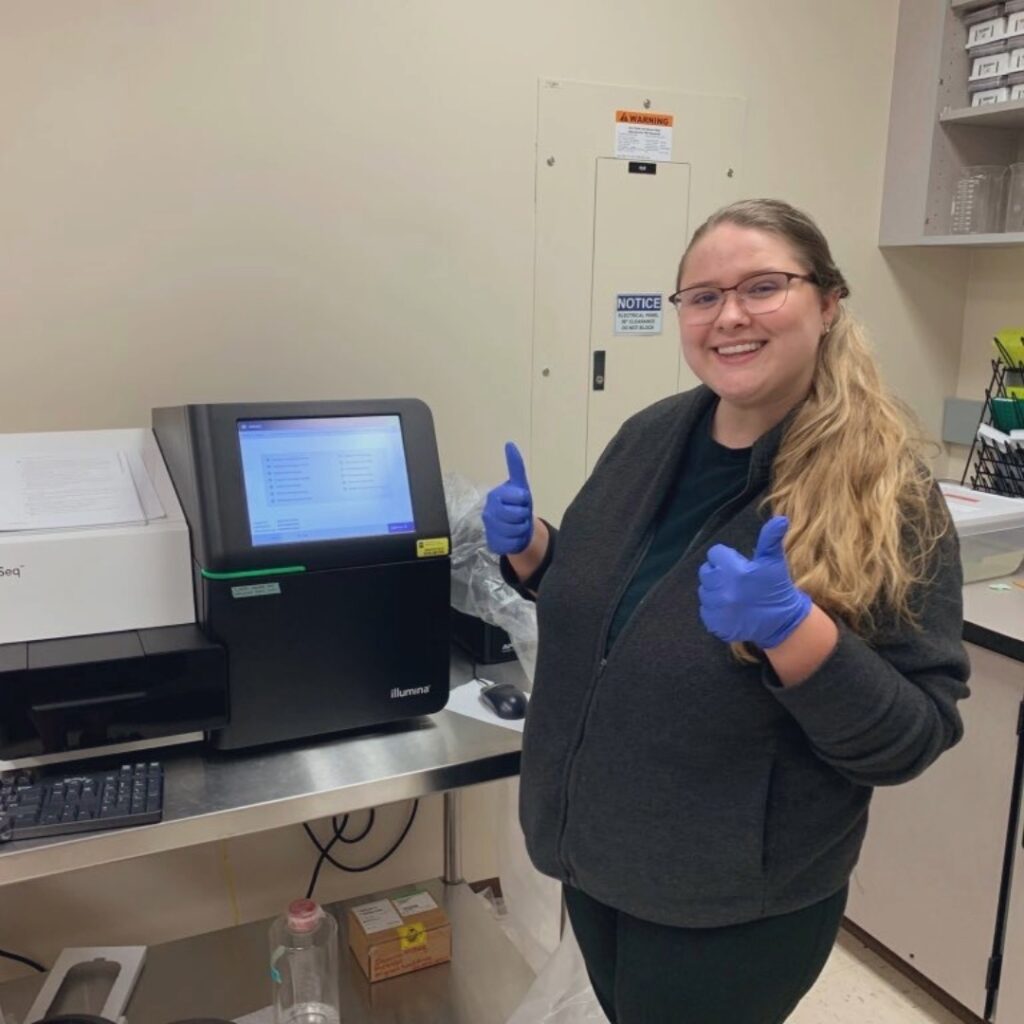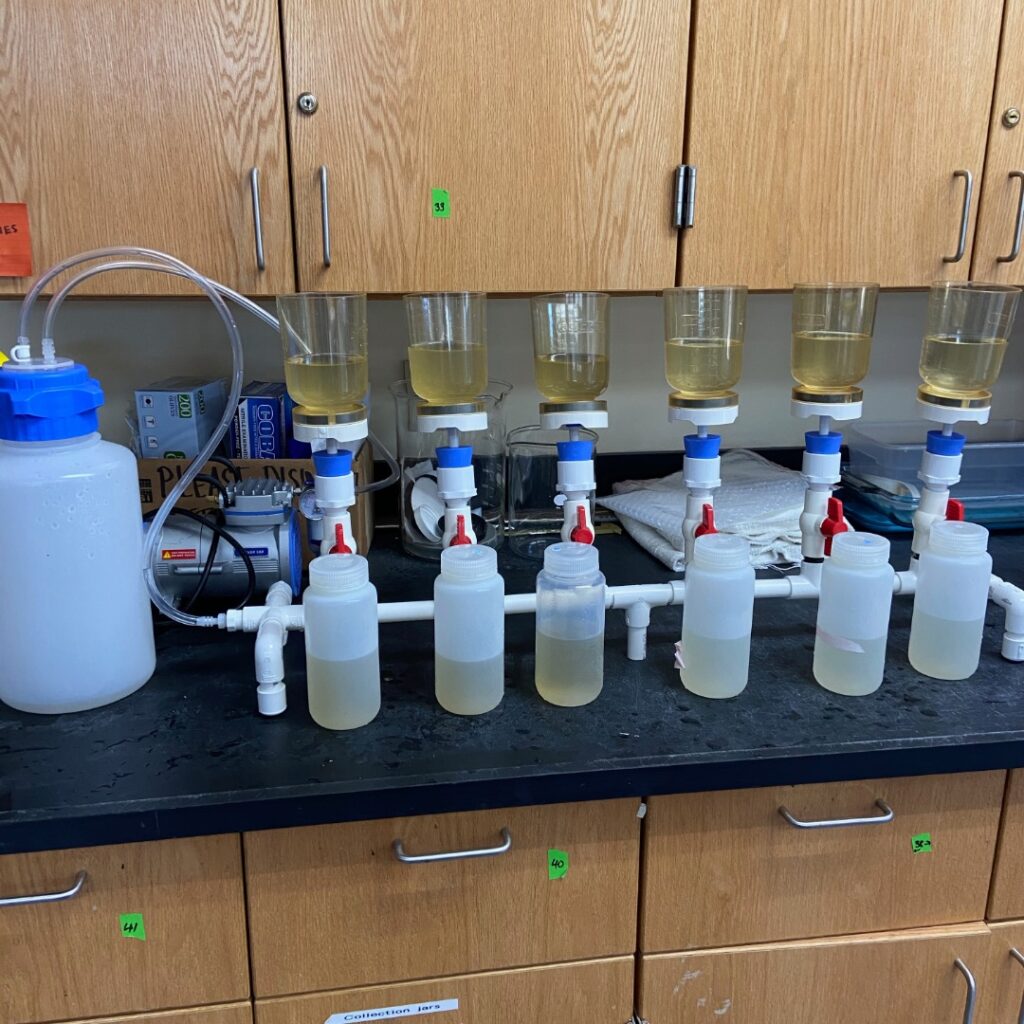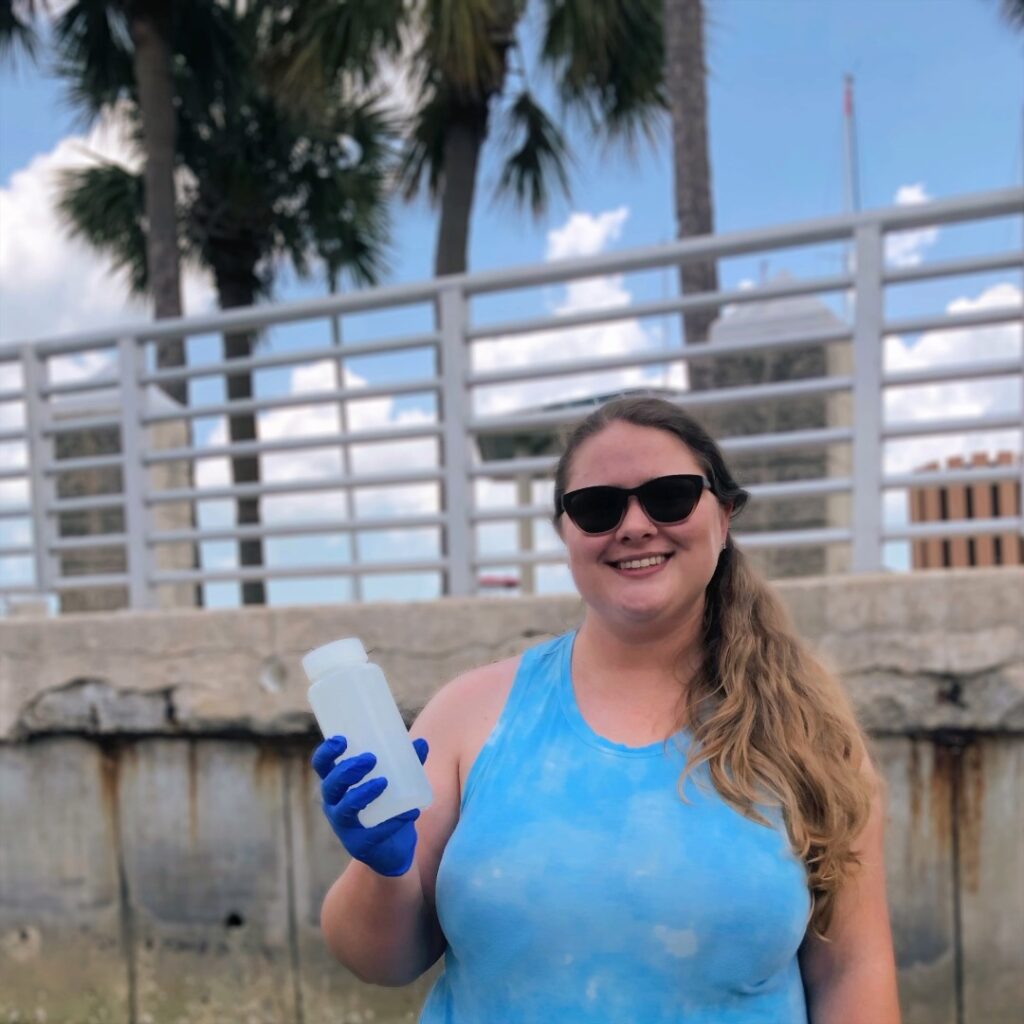
Reaume collecting water and plankton samples at Guana Tolomato Matanzas National Estuarine Research Reserve. Image by Ashley Reaume.
When gazing up at the towering trees, it’s easy to perceive them as the sole “lungs of Earth”. However, microscopic marine plankton also play a vital role in oxygen production. Phytoplankton, despite their size, contribute to roughly half of Earth’s oxygen supply. Much like plants, they utilize photosynthesis to harness the sun’s energy, converting it into essential oxygen while absorbing carbon dioxide.
To help us understand the dynamics between plankton and water quality, Ashley Reaume, a Ph.D. candidate in integrative biology at the University of Central Florida, is diving into the microscopic world of plankton. Employing advanced techniques like DNA metabarcoding alongside water sampling, Reaume has embarked on a yearlong study within the Guana Tolomato Matanzas National Estuarine Research Reserve (GTMNERR) near St. Augustine, Florida. Her research aims to reveal patterns in plankton community composition and their response to varying water quality.
“Plankton, often used as bioindicators of water quality, respond rapidly to environmental disturbances, making them crucial for understanding ecosystem health,” says Reaume.
Her research involves sampling at ten different sites across the GTMNERR over a year to capture the dynamic changes in plankton communities across different seasons and environmental conditions. Using DNA metabarcoding technology, the data collected promises to offer insights into how these communities respond to natural and anthropogenic changes.

Reaume uploading samples on the MiSeq to be sequenced for the first time. Image by Ashley Reaume.
Expanding the Reach of DNA Metabarcoding Across Diverse Fields
Reaume’s research enhances our understanding of marine ecosystem dynamics and explores the potential of DNA sequencing technology. DNA metabarcoding is a revolutionary molecular technique that enhances our ability to study biodiversity. By analyzing DNA from environmental samples, researchers can accurately identify species present in each area.
“By using bioinformatics, we can identify the species from which the sample came, similar to how a barcode works at a store. To us, the sequences might look the same, but to the computer, they’re different. It analyzes a small part of the genetic sequence to identify the target organisms,” says Reaume.
For Reaume’s research, DNA metabarcoding provides deeper sampling and higher species resolution, crucial for understanding the complex dynamics of plankton communities.
“Many people see it as a brand-new tool, but its development has been gradual since the advent of DNA sequencing. Over the past decade or two, I’ve noticed its growing adoption by management agencies as it becomes more user-friendly. Being at the forefront of this science and witnessing its evolution throughout my career has been fascinating.”
However popular the technique is, there is no official or standardized technique for implementing DNA metabarcoding in estuarine environments, which are unique, because of the different water mixing and turbidity. To address this, Reaume dedicated the first chapter of her dissertation to a methodological study, comparing different DNA extraction kits to determine the most efficient and cost-effective approach for estuarine samples.
Plankton, often used as bioindicators of water quality, respond rapidly to environmental disturbances, making them crucial for understanding ecosystem health.
Ashley Reaume

Filtration of water samples in the lab. Image by Ashley Reaume.
Trial and Error Compute Successful Results
While DNA metabarcoding might suggest vast and complex technologies, Reaume’s research starts with just a bottle of water!
“For my research, I simply take a bottle of surface water and filter it. The DNA is collected on a piece of filter paper, which we then use to extract the DNA – kind of like how people take fin clips to extract fish DNA or tissue samples; we do the same thing but with filter paper that has collected DNA from the water,” says Reaume. “The initial fieldwork involves collecting and filtering the water, then storing it until it’s ready for the metabarcoding process, which involves several steps.”
Fieldwork in the GTMNERR was not without challenges. The high turbidity of some estuarine waters made filtering samples a time-consuming task. Reaume had to adapt her methods, splitting samples across multiple filters to ensure thorough processing. In the lab, Reaume’s journey involved numerous troubleshooting episodes, from perfecting DNA extraction techniques to optimizing PCR conditions. Each step, though tedious at times, was crucial in ensuring the accuracy and reliability of the sequencing results.
“The metabarcoding side of this research comes with a lot of learning curves and troubleshooting. However, now I have good experiences with problem-solving and perseverance in the lab, and the results make it all worth it. Getting to the end and having some data about these microscopic organisms is a satisfying feeling, especially when retrieving the first taxonomic species assignment list.”

Reaume holding container for sampling. Image by Ashley Reaume.
Future Directions and Aspirations
The data from Reaume’s study holds significant potential for informing ecosystem management and conservation efforts. By comparing plankton communities in different regions of the GTMNERR, Reaume aims to identify patterns that can guide targeted conservation and monitoring strategies. The detailed water quality and nutrient data collected alongside the plankton samples will provide a comprehensive picture of the ecosystem’s health and dynamics.
As Reaume looks to the future, she reflects on her research laying the foundation for further advancements and optimization in DNA metabarcoding and contributing valuable knowledge to the field of marine biology and the intricate dynamics of plankton communities, all of which was supported by the Aylesworth Scholarship.
“The scholarship has been invaluable, allowing me to stay in Florida and continue the research I love and enabling me to remain in my program and pursue my research. I am very grateful for this support, as there aren’t many opportunities that help with the cost of living,” says Reaume.
After graduation, she envisions a career in applied science, ideally within government agencies like NOAA, where she can continue her impactful work in coastal and estuarine ecosystems.
“I have become very attached to these ecosystems and am passionate about the work we’ve been doing. While my future path is still uncertain, I am committed to remaining in this field.”
The Aylesworth Scholarship is a joint program of the Aylesworth Foundation for the Advancement of Marine Science, the Southeastern Fisheries Association, and the Florida Sea Grant College Program. Aylesworth scholarships are available to students in all Florida universities that conduct research in the marine sciences. To learn more visit https://www.flseagrant.org/wp-content/uploads/2024/04/scholarship-onepager-aylesworth-2024-web.pdf or contact Cassie Sexson at fsg-students@ifas.ufl.edu.